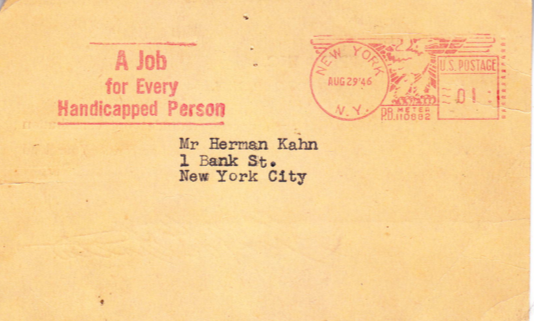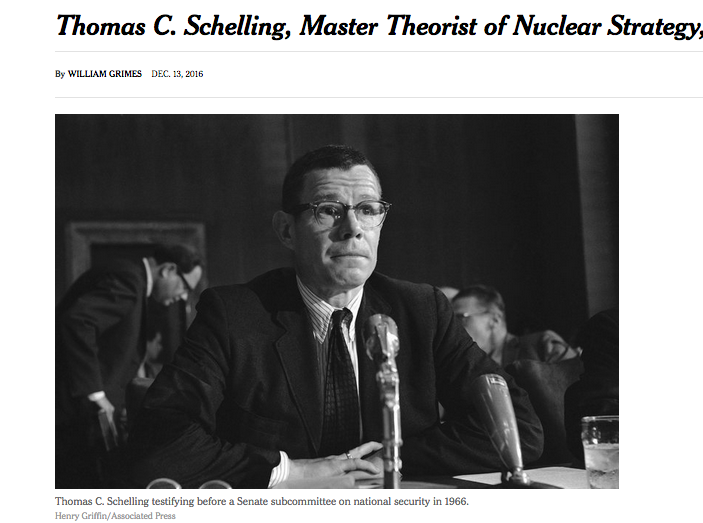The headline on Thomas Schelling’s obit in the NY Times dubbed him “master theorist of nuclear strategy.” Schelling proved to be far saner than the three ogres mentioned as his fellow theorists:
“After spending a year studying nuclear weapons at the RAND Corporation in 1958 and writing ‘The Strategy of Conflict’ (1960), he took his place as a leading theorist of nuclear war and peace along with the RAND intellectuals Herman Kahn and Albert Wohlstetter, as well as Henry A. Kissinger, the director of the Defense Studies Center at Harvard.”
The role of these experts in the 1950s was to make the use of nuclear weapons seem feasible. There had been a few years when the people of the world were so appalled by the destruction of Hiroshima and Nagasaki, and the Russkies had developed A-bombs and H-bombs of their own, and the prospect of Mutually Assured Destruction was so obvious, that the use of nuclear weapons seemed unthinkable.
Then young Henry Kissinger made his bones with a list of rules that would enable combatants to fight a “limited” nuclear war. Schelling proposed “game theory” as a way to break the nuclear stalemate. Obese Herman Kahn weighed in with a best-seller called “Thinking about the Unthinkable.” These gentlemen provided the rationale for a nuclear arms race —increasingly sophisticated weapons and delivery systems— that continues to this day and has made the Arms Industry dominant in the US economy.
Schelling was not a committed Cold Warrior. When Stanley Kubrick was planning his great film “Dr. Strangelove,” he used Schelling as a consultant. William Grimes’s obit also reminds us that Schelling implored Kissinger and Nixon (in vain) not to bomb Cambodia in 1970.
Schelling won the Nobel Prize in economics in 2005. The obituary by Grimes recounts:
Expanding on the work of Morton Grodzins, a political scientist at the University of Chicago who used the term “tip point” to describe the crucial moment when white fears become white flight, Mr. Schelling offered a simple diagram, almost like a game board, to show how mixed urban neighborhoods could quickly become entirely black, even when white residents expressed only a slight preference for living among members of their own race.
His papers on the subject, and his book “Micromotives and Macrobehavior” (1978), achieved wider currency when his ideas were popularized by Malcolm Gladwell in his best-selling book “The Tipping Point” (2000).
The basic concept was laid out by Frederick Engels, who wrote that quantitative change, at a certain point, results in qualitiative change. Like, ice melts. No one repackages ideas as lucratively as Malcolm Gladwell.
When I was a lad and there were used-book stores on 4th Avenue, I was browsing in one and found, inside some tome (can’t remember which), a postcard to Herman Kahn thanking him for his contribution to the Federation of the Handicapped. I thought it might be a sign, but of what I did not know.





